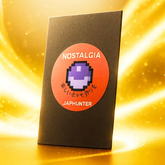Comparing the Pokémon TCG to Other Major Trading Card Games
The world of trading card games is vast and ever-evolving, with multiple franchises—some decades old, others brand-new—vying for players’ and collectors’ attention. Among these, the Pokémon Trading Card Game (TCG) remains a juggernaut. But how does it stack up against other top contenders like Magic: The Gathering, Yu-Gi-Oh!, or newer hits like One Piece Card Game? This article dives into key points of comparison—gameplay, collectability, community, and overall market trends—to help you navigate the TCG landscape.
1. Gameplay Structure
Pokémon TCG
-
Energy System: To use attacks, Pokémon require specific Energy cards. This mechanic balances gameplay and strategy.
-
Prize Cards: Taking six Prize cards by knocking out opponents’ Pokémon sets a clear, quick objective.
-
Evolving Mechanics: Evolving Basic Pokémon into Stage 1 or Stage 2 adds an element of timing and resource management.
Magic: The Gathering
-
Mana Resources: Lands and other mana sources let you cast spells of varying colors and complexities.
-
Depth of Strategy: Magic has a steeper learning curve, with multiple formats (Standard, Modern, Commander) each having distinct rules and card pools.
Yu-Gi-Oh!
-
Fast-Paced Dueling: Turns can be explosive, featuring combo chains and summoning multiple monsters in one go.
-
Life Point System: Reducing your opponent to zero life points is the main objective.
-
Fusion/Synchro/XYZ/Summons: Numerous mechanics introduced over the years keep the game fresh but also add complexity.
One Piece Card Game (and Others)
-
Unique Resource Mechanics: Some newer TCGs like the One Piece Card Game incorporate different resource systems (like Don!! cards) to fuel powerful moves.
-
Narrative Tie-Ins: Just like Pokémon’s focus on Trainer-Pokémon partnerships, these games leverage popular storylines from their respective manga/anime to engage fans.
2. Rarity and Collectability
Pokémon TCG
-
Multiple Rarity Tiers: Commons, Uncommons, Rares, Holo Rares, Ultra Rares, Full Arts, and Secret Rares.
-
Art and Aesthetics: Vibrant artwork and special foil patterns (e.g., Rainbow Rares, Alternate Arts) attract collectors.
-
Language Variations: Japanese cards often have higher print quality and exclusive releases, making them highly sought-after.
Magic: The Gathering
-
Staples and Reserved List: Certain legacy cards remain high-value due to limited reprints and high utility in competitive formats.
-
Special Editions: Foil variants, Masterpieces, Secret Lair drops, and unique frames boost collector interest.
Yu-Gi-Oh!
-
Rarity Overlaps: Super Rare, Ultra Rare, Secret Rare, Ghost Rare… The sheer number of rarities can be both exciting and daunting.
-
Iconic Cards: Original sets (e.g., Legend of Blue Eyes White Dragon) and iconic monsters (Blue-Eyes, Dark Magician) maintain strong nostalgia and resale value.
One Piece Card Game (and Others)
-
Chase Cards: Leader cards or special alternates can carry hefty price tags.
-
Release Cycles: Newer games usually have fewer sets out, meaning short-term hype can significantly inflate certain card prices.
3. Community and Competitive Scenes
Pokémon TCG
-
Family-Friendly and Accessible: The straightforward energy system and evolving mechanics make it suitable for younger players.
-
Play! Pokémon Events: Official leagues, pre-release tournaments, and championship circuits are well-organized worldwide.
-
Global Popularity: Strong synergy with the video games, anime, and overall Pokémon brand keeps a constant influx of newcomers.
Magic: The Gathering
-
Diverse Formats: From casual Commander nights to high-stakes Pro Tours, there’s a place for every player.
-
Long-Standing Community: Decades of history have cultivated deep strategic discussions, collectors’ markets, and fan content.
Yu-Gi-Oh!
-
Anime Influence: Many players are drawn to the game through the popular anime series.
-
Fast Competitive Scene: Tournaments are frequent, and meta decks can be quite combo-intensive, favoring experienced players.
One Piece Card Game (and Others)
-
Fandom-Driven: Much of the player base comes from the existing manga/anime community, fostering a passionate, story-centric environment.
-
Growing Scenes: As the game is still establishing its footing, tournaments and local meetups are expanding quickly.
4. Market Trends and Price Fluctuations
Pokémon TCG
-
High Demand for Vintage: Older sets (Base, Jungle, Fossil) and certain modern chase cards (Charizard, alternate-art legendaries) can fetch extreme prices.
-
Ongoing Hype: Social media influencers and celebrity collectors have spiked interest, periodically causing price surges.
Magic: The Gathering
-
Reserved List Impact: Rare legacy cards that aren’t reprinted maintain elevated prices.
-
Reprint Waves: New supplemental products can stabilize or inflate certain card values depending on print runs.
Yu-Gi-Oh!
-
Reprint Sets: Annual Megatins and special reprint sets can cause fluctuations in previously expensive cards.
-
Collectible Vintage: Early 2000s cards, especially 1st Edition, command strong nostalgia-driven premiums.
One Piece Card Game (and Others)
-
Early-Stage Volatility: Limited supply and new expansions can cause rapid shifts in card values. The market is still finding its equilibrium.
5. Which TCG Is Right for You?
Choosing a TCG depends on your preferences for game complexity, art style, and collecting goals. If you love colorful artwork, a somewhat simpler rule set, and the chance to engage with a broad, family-friendly community, Pokémon TCG is an excellent fit. If you crave deeper mechanics or prefer a darker fantasy setting, Magic or Yu-Gi-Oh! might appeal more. And if you’re a die-hard fan of a specific franchise (e.g., One Piece), diving into a newer game could be the perfect way to combine fandom with collecting.
Conclusion
Each TCG has its own charm, and Pokémon stands out for its accessible gameplay, consistently appealing art, and massive worldwide appeal. While Magic: The Gathering and Yu-Gi-Oh! hold strong in strategy and nostalgia, the Pokémon brand’s synergy across video games, anime, and collectibles gives it a unique edge. In the end, the “best” game depends on your personal taste—be it the competitive scene, the collecting thrill, or simply a passion for the characters’ lore. Whichever you choose, the world of trading card games is vibrant, varied, and always ready to welcome new fans. Happy collecting—and dueling!











